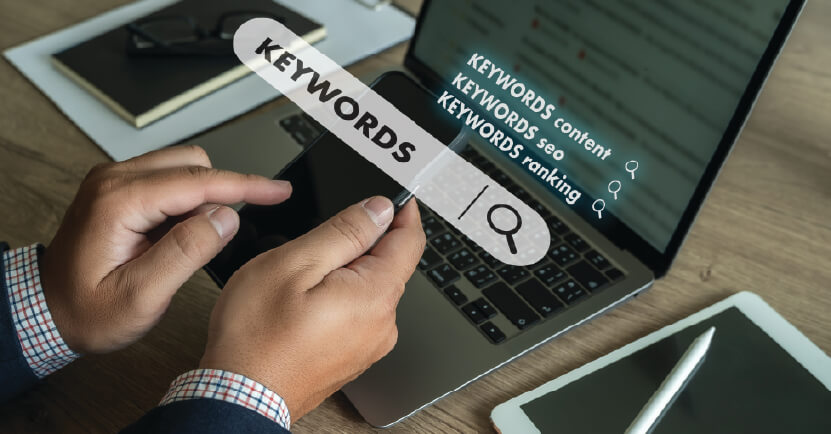- 0243394034
- info@centralcoastseo.com.au
- Google 1st Pages Guaranteed in Writing.
How to Use Keywords to Master Intent Marketing

How to Use Keywords to Master Intent Marketing
Using keywords to capture consumer attention is easier said than done. Here’s how intent marketing works with keywords to attract high conversion web traffic.
Keyword(s): intent marketing
Do you want to know how to slash your bounce rate and maximize conversions? You need to master intent marketing.
It’s not enough to feed the funnel if you’re attracting traffic with no intentions of actually buying what you’re offering. You need to reach the right person at the right time in the right place. And then you have to close the deal.
Your keyword selection should be driven by the intent of the customers you’re attracting.
Let’s explore how.
Your Objectives
In line with the adage to “start with the end in mind”, you’ll begin with your objectives. Your primary objectives in an intent marketing campaign are as follows:
- Increase highly qualified leads
- Reduce click through rate of those with low buy intent
- Increase conversion rate
The actual numbers that you put on these goals will depend on your company’s overarching goals.
This isn’t about brand awareness, customer retention, staying top of mind or any other common marketing campaign goals. Intent marketing focuses on conversion.
How Intent Marketing Achieves These Goals
For contrast, let’s imagine a bloke flailing about. See his arms outstretched in every direction, reaching for anyone and anything that he can get their hands on.
This is how many SEO and Pay per click (PPC) marketing campaigns work. They broadcast their efforts, hoping something sticks. The way they see it: all traffic is good traffic. And worst of all, they may be paying for each click through even though these clickers have no intention of buying.
But when you select keywords for an intent marketing campaign, no flailing required. You’re honed in on people who are exactly where you want them to be.
For these people, conversion is just the next logical step, as long as you give them the means to do so once they hit your site.
How to Select High Intent Keywords
Step 1) Brainstorm
Establish what words customers are using when they’re ready to buy. What words do you think customers are using when they’re ready to buy? Write these words down in a spreadsheet.
Common intent to buy words include:
- Buy
- Hire
- Get
- Purchase
- Discount(s)
- Deal(s)
- Coupon(s)
- Free shipping
- Near me
- Model # or ISBN # – These show high-level intent because the person knows exactly what they’re looking for.
You may also want to capture secondary traffic. These are people who are very close to making a decision to buy. But they still need a little convincing that now is the time to buy.
- Branded search – Looking for a specific brand name that you may sell
- Specific product – For example, they don’t just type “iPhone”; they search for “iPhone 7 Plus” or “iPhone 7 silver”.
- Narrow product/service categories – “summer car maintenance”, “premium dog food”.
- Affordable
- Cheap(est)
- Best
- Reviews
- Top
- Most dependable
Step 2) Analytics
This is the more data-driven method, which we prefer when it’s an option.
You can use various analytics tools and visitor tagging (cookies) to track visitors through your site. Through this, you can see which keywords translate to high conversion rates.
Target these keywords.
Some of these tools must be set up. And they can’t track data before they were set up. So it’s important to activate them to track moving forward. This will allow you to drastically improve the effectiveness of your marketing efforts.
Free tools to get started would be Google Analytics and Google Tag Manager.
Step 3) Complementary Keywords
What words go with the above intent words that will lead them right to your product? Some examples might be:
- Best fence builders
- Affordable computers
- Italian restaurant reviews
- Furniture free shipping
Develop as many combinations as you can. But don’t lose sight of the intent of someone who would type that phrase.
Step 4) Review the Words in a Keyword Planner
You may use Bing’s keyword search tool or Google’s keyword planner, which are free. Or you may choose a paid program to gain greater insight into which keywords will work best for your intent marketing campaign.
In these tools you can search keywords to find out the following:
- How competitive the keyword phrase is
- How many people are paying per click for that keyword
- How much traffic that the keyword phrase receive you’re looking for phrases with the highest traffic for the lowest competition and lowest cost per click.
But be mindful. These words are worth much more to you because you’re not “flailing” like the bloke in our analogy.
You’re highly targeted. And your ROI will be much higher because you’re so targeted.
If you’re selling furniture, it would be unadvisable to pay a lot for the word “furniture” because there’s no signal of intent behind it. But if someone is searching for a brand and of furniture that you sell, this word is of higher value to you.
Additionally, don’t be surprised if some of these words have less than >1000 monthly visitors — as few as 100. Again, because you’re so targeted, you have the ability to squeeze more conversions out of fewer people.
Step 5) Decide Where to Use These Keywords
Start with SEO. SEO will help you maximize all of your other marketing efforts. You’ll naturally appear higher in searches without having to pay per click.
Businesses who create blogs obtain 97% more backlinks than those who don’t. Backlinks are one of the top drivers in the Google algorithm that determines how high a site ranks for a keyword in search results.
Build website content and blogs around these keywords.
Next, begin developing PPC campaigns. Google Adwords and Bing ads have a variety of advertising formats. Their shopping ads can be particularly effective in intent marketing.
If you have a larger PPC campaign running all of the time, then create an ad group specific for intent marketing. Compare the conversion rate between the two.
Step 6) Convert This Traffic
Funneling the traffic into your site isn’t enough. To convert this traffic you must optimize your:
- Ads
- Landing pages
- Message
- Calls to action
- Site speed
- Mobile-friendliness
- Site navigation
Your goal is to create a flawless experience that guides these highly qualified leads in for a smooth landing (conversion).
Intent Marketing Delivers More Qualified Leads for Higher Conversions
Stop flailing around aimlessly. Get hyper-focused with intent marketing to maximize your marketing ROI.
To learn more about how we can help you get more qualified leads by targeting the right keywords in your SEO strategy, contact us today.


















